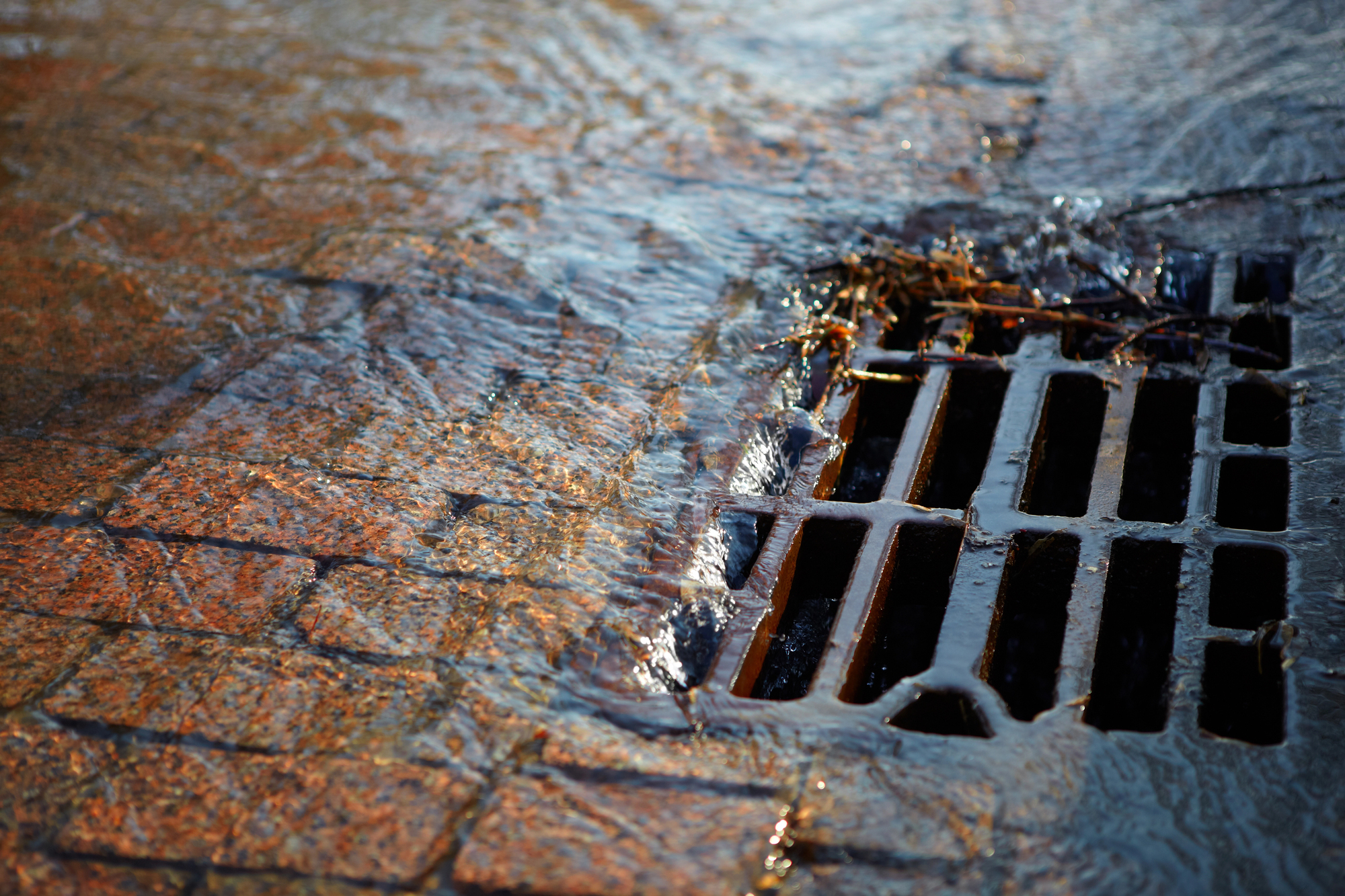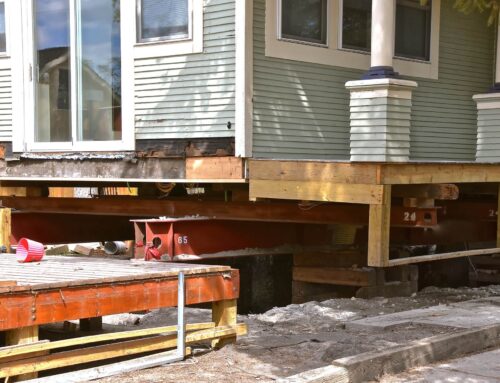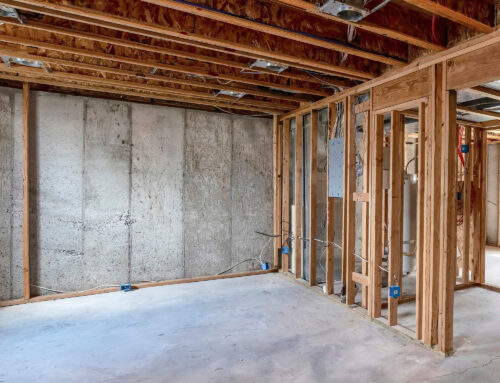Improper drainage on the outside of your home is one of the main causes of foundation problems for many people across Texas. It’s an issue that’s influenced by a lot of different factors, from soil conditions and weather patterns to proper maintenance, and it doesn’t affect everyone the same because of that. Implementing an effective foundation drainage solution is essential to prevent these issues and protect your home’s structural integrity. One key benefit of proper drainage solutions is that they help prevent foundation issues and improve the integrity of your home’s structure, ensuring long-term protection and stability. However, we’re getting ahead of ourselves!
In this article, we will talk about the many ways that poor exterior drainage damages your home’s foundation and how improper use of irrigation systems can make the problem worse. Taking these findings and tips into account will help you protect your foundation from major issues and costly repairs.
Introduction to Foundation Problems
Foundation problems are a major headache for homeowners, often leading to expensive repairs and even threatening the safety of your home’s structure. One of the most common culprits behind these issues is poor drainage. When water isn’t properly directed away from your house, it can result in excess moisture around the foundation, causing everything from minor water damage to serious foundation cracks and instability.
If you don’t fix poor drainage, you might notice pooling water around your home after heavy rains, or even moisture seeping into your basement or crawl spaces. Over time, this excess moisture can weaken the foundation, leading to foundation damage and a host of other problems. Ignoring drainage issues doesn’t just put your foundation at risk—it can also create an environment for mold, mildew, and other moisture-related problems that affect your entire home.
Understanding the importance of proper drainage is the first step in protecting your investment. By addressing drainage issues early, you can prevent foundation problems, avoid costly repairs, and maintain the integrity of your home’s structure for years to come.
Causes of Drainage Issues
Drainage issues can develop for a variety of reasons, and it’s important to pinpoint the source before you can effectively improve drainage around your home. One of the most common causes is improper drainage—when gutters and downspouts are clogged, broken, or poorly positioned, rainwater can pool around the foundation instead of being carried safely away. This pooling water increases moisture levels in the soil, which can lead to foundation problems and water damage.
Plumbing leaks are another frequent source of excess water near the foundation. Even a small, unnoticed leak can saturate the ground over time, creating persistent drainage issues. Poor grading around the home can also cause water to flow toward the foundation rather than away from it, compounding the problem.
To combat these issues, homeowners can install solutions like French drains and catch basins. French drains use a perforated pipe surrounded by gravel to redirect water away from the foundation, while catch basins collect and channel runoff to safer areas. By understanding and addressing the root causes of drainage problems—whether it’s faulty gutters, plumbing leaks, or poor grading—you can protect your foundation and prevent costly water damage.
Problems Caused by Poor Drainage Around Your House
When your home doesn’t have a proper foundation drainage system, the result can be far more serious than a damp foundation. Poor drainage can lead to excess moisture building up around the foundation, threatening your home’s structural integrity and long-term stability.
Here are some of the main problems that failing to improve your exterior drainage can cause. A drainage issue can lead to foundation movement and potential damage to your house foundation. It is important to determine the specific causes of foundation problems related to poor drainage to develop the right solution. These problems can be mitigated by installing foundation drains or a properly designed drainage system that manages water flow around your foundation effectively.
Foundation drainage systems such as french drains, perimeter drains, footing drains, or a sump pump connected to a sump pit help divert water away from the foundation. Proper installation and maintenance of these systems—using an approved filter membrane material, crushed stone, or gravel—prevent basement flooding and costly repairs. Poor drainage can also cause cracks and misalignment in doors and windows, which are common signs of foundation movement.
Water Damage on Your Foundation
Concrete, while one of the most durable materials used in construction, is still susceptible to water damage when exposed to excess water for prolonged periods. Concrete is a porous material, and when water or groundwater accumulates beneath the surface, it can cause water seepage and affect basement walls or foundation walls.
A poor drainage system can lead to heavy rain saturating the soil and increasing hydrostatic pressure. This pressure may result in slab movement or slab heave in a concrete slab, which can create uneven floors and stress on the building’s structure.
Although concrete foundations can handle limited water exposure, a lack of an approved drainage system means the foundation will constantly be surrounded by moisture, increasing the risk of foundation cracks. Installing a drain pipe, sump pump, or discharge pipe that directs water away from the foundation helps prevent water buildup and protects your property.
Soil Expansion
The soil around your foundation can also absorb excess moisture caused by poor drainage. When the soil becomes saturated, it expands, exerting hydrostatic pressure on foundation walls and basement walls. This can lead to cracks and shifting that compromise the structure of your home.
Soil expansion becomes worse during heavy rain or storm sewer overflow when water pooling or standing water near the lowest point of your property adds more pressure. Installing a foundation drain or perimeter drain with proper installation using crushed rock or gravel helps maintain stability. The International Residential Code recommends that all systems use gravity or mechanical means to pump water away from the foundation, ensuring the entire home remains stable and dry.
Proper foundation drainage installation not only prevents soil expansion but also reduces the chance of foundation damage over time.
Soil Erosion
Soil erosion happens when excess water constantly seeps into the ground and then dissipates, displacing soil around the foundation and affecting the building’s balance. Heavy rainfall can wash away soil, leading to foundation settlement and structural issues. Dirt, debris, and poor grading drainage also contribute to water pooling, worsening erosion.
Regrading your property and installing an approved drainage system or drain pipe that directs water flow away from the foundation will protect the house foundation from erosion. Regular maintenance of your foundation drainage system ensures that drains, pipes, and pumps remain clear to prevent water from returning toward the structure.
Soil Flooding
If you live in an area prone to flooding, foundation drainage systems become even more important. Installing sump pumps, sump pits, and footing drains helps pump water out using mechanical means and prevents soil saturation during heavy rainfall.
An effective system should lead water away from the foundation through discharge pipes and approved filter membrane material that prevents soil from clogging the system. Proper installation during the construction phase, along with regular maintenance, ensures that the drainage system continues to protect the foundation, basement, and overall home’s structure.
Flood vents and sealed basement walls can also reduce water infiltration, protecting the foundation from internal water damage.
Signs of Poor Exterior Drainage
Poor exterior drainage can cause various problems that leave visible signs around your home. Recognizing them early helps prevent costly repairs.
Water pooling occurs when water is not properly directed away from the foundation. It can accumulate and cause damage to foundation walls or lead to basement flooding. Cracks in the foundation or basement are another clear indication of persistent water seepage and drainage failure, which weaken the home’s structure. Musty odors and mold growth from excess moisture and standing water can also affect air quality and indicate poor foundation drainage.
If you notice any of these warning signs, have your drainage system inspected immediately. Proper installation of foundation drains, perimeter drains, or french drains that extend beyond the property line helps divert water and protect the foundation effectively. Systems using gravity or mechanical means to pump water away from the house foundation ensure long-term performance and protect the structure from future damage.
By installing a well-designed drainage system that includes sump pumps, drain pipes, and approved filter membrane material, you can maintain your foundation’s structural integrity, prevent water seepage, and safeguard your entire home from excess moisture and potential damage.
Musty odors: Additionally, poor drainage can lead to musty odors and mold growth, which can be hazardous to a home’s occupants.
If you notice any of these signs, it may be necessary to inspect and repair your foundation drainage system.

Key Components of the Exterior Drainage System of a House and How to Improve Them
Your exterior drainage system is composed of three main parts: Number one, the slope of your lot, which should help the water run away from your property; number two, your roof gutters; and number three, a well-designed foundation drain can help prevent these issues and ensure the longevity of a home.
It is essential to hire qualified contractors for the installation and maintenance of these drainage components to ensure effective and lasting results. Choosing a reputable business with experience in drainage and foundation repair work provides added assurance that the job will be handled professionally and reliably.
1. The Slope Of Your Lot
When building a home, it’s vital to make sure that the lot it’s built on slopes away from the foundation on all sides. An improper slope can cause a drainage problem, leading to water accumulation around the foundation and increasing the risk of structural issues. If you feel like the soil around your foundation is overly damp after each rain or watering session, or if you have doubts about whether the ground around your house actually slopes away from it, you might want to have an expert look. They can inspect the lot to see if it’s level and grade the soil around your home if needed. There are many measures that can be implemented if you find out you’re sitting on a negative slope. Here, too, installing an exterior drain tile system can further enhance the effectiveness of your lot’s slope in directing water away from your foundation.
2. Roof Gutters
When rain falls on the roof of your house and then rolls off to the sides, your gutters carry it away from the foundation into the spout. Proper gutter installation and regular gutter maintenance are essential to ensure your drainage system works effectively and prevents water from pooling around your foundation.
Regular maintenance of your gutters is a crucial part of foundation drainage work to ensure water is effectively directed away from your home. Take some time each year to clear out your roof gutters and water spouts from any debris that can create a blockage, such as twigs, rotten leaves, or whatever else. Also, make sure that the spout is carrying the water sufficiently away from your home so it doesn’t end up damaging your foundation anyway.
3. Exterior (and Interior) Drains and Pumps
Installing foundation drainage systems are essential for preventing water damage and protecting the structural integrity of a home. Homeowners may need to be called for professional installation or repair of drainage systems to ensure proper function and long-term protection. The four types of foundation drainage systems each play a unique role in redirecting water away from the foundation, reducing the risk of leaks, erosion, and foundation shifts. These four are;
French drain: This is a type of exterior drainage system that consists of a perforated drain pipe surrounded by gravel and landscape fabric. It is installed around the perimeter of a home’s foundation to collect and redirect water away from the foundation. They are great for redirecting groundwater, preventing water accumulation in areas with poor drainage or heavy rainfall, reducing soil erosion and reducing hydrostatic pressure
Footing drainage: This, on the other hand, is a type of drainage system that is installed at the footing level of a home’s foundation. A footing drain consists of a perforated pipe that collects water and directs it away from the foundation. By preventing water from building up around the foundation, footing drains reduce the risk of hydrostatic pressure, which can lead to cracks, leaks, and structural weakening, helping to maintain the integrity of the foundation over time.
Grading drainage: This is a technique that involves sloping the ground away from a structure to direct water away from the foundation by reshaping the landscape. It is installed by excavating or adding soil to create a consistent grade that channels water away from the building. Proper grading prevents water from pooling around the base of the house, reducing the risk of soil erosion, basement leaks, and foundation damage caused by water infiltration or shifting soils. This helps maintain a stable and dry environment around the home’s foundation, protecting it from long-term water-related issues.
Sump Pit and Sump Pump: This is designed to collect and remove excess water from below a building’s foundation, preventing flooding and water damage. The sump pit is installed in the lowest part of the basement or crawl space, where it receives water from a drain tile system, and a pump is placed inside to automatically discharge water away from the foundation when the pit fills. This is particularly useful if the soil your house is sitting on is prone to excessive water absorption.
Bonus Tip:
Whether you have an automated irrigation system or you do it the old-fashioned way, your landscaping should be done away from your foundation. Make sure that your sprinklers are not pointed toward your house or that their spray doesn’t linger too long on the soil over your foundation, resulting in excess water saturating the soil around your foundation. If you do it with a hose, just make sure that you’re not overwatering because that can cause soil erosion and water damage to the concrete of your foundation. Additionally, installing an interior drain tile system can help manage water that enters your basement, directing water flow to a sump pit for removal.
Addressing Underlying Issues
Solving drainage issues starts with identifying the underlying problem and taking targeted action. If you’re dealing with persistent water around your foundation, consider installing a French drain or a sump pump to redirect and remove excess water. French drains are especially effective for managing groundwater, while a sump pump can quickly remove water that collects in basements or crawl spaces.
It’s also crucial to inspect your home for plumbing leaks, as even minor leaks can contribute to ongoing drainage issues and foundation damage. Repairing these leaks promptly will help keep moisture levels in check. Don’t forget about your gutters and downspouts—regularly cleaning out debris and ensuring they’re properly installed will go a long way in preventing water from pooling near your foundation.
Once you’ve implemented these solutions, be sure to verify that they’re working as intended. Monitor your home after heavy rains to ensure water is being directed away from the foundation, and keep up with regular maintenance to prevent future problems. Completing the action of addressing these underlying issues not only protects your foundation but also helps maintain the overall structure and safety of your home.
Prevention and Maintenance
The best way to avoid drainage issues and foundation problems is through prevention and regular maintenance. Start by installing and maintaining gutters and downspouts to ensure rainwater is effectively channeled away from your home. Keep your yard clear of debris and make sure the grading slopes away from the foundation to improve drainage naturally.
Regular inspections are key—walk around your home after a rainstorm to check for standing water or pooling near the foundation. If you spot any issues, address them promptly before they escalate. Installing solutions like French drains or catch basins can provide extra protection in areas prone to excess water.
Think of prevention and maintenance as your home’s security system—review the security of your connection to the ground by making sure water flows away, not toward, your foundation. And just like you’d verify you are human by completing a simple action online, take the time to complete regular checks and maintenance tasks. By staying proactive, you’ll protect your foundation, avoid costly repairs, and enjoy peace of mind knowing your home is safe from the risks of poor drainage.
Closing Thoughts
Excess water is bad news for your foundation; that much is clear. A proper exterior drainage system and not overusing your automated irrigation system will do wonders to prevent the damage that water can do to a concrete foundation. It’s also important to do regular checkups on the state of your foundation, so don’t hesitate to call our team at Xpert Foundation Repair to do so! We are foundation repair professionals that have the latest tech and years of experience to back up our work.










